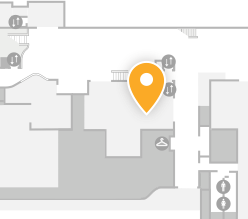
Bookcase (Primary Title)
Unknown (Artist)
Large case pieces in the early Gothic Revival style are frequently classical revival structures with applied Gothic motifs. This bookcase, with its broad rectilinear form and arched glazed doors, follows that example. Although few such works can be documented to Philadelphia, the city appears to have favored an architectonic variation on the Gothic Revival style with limited florid tracery. The taste may have been prompted by British architecture and furniture designs transmitted to America by way of craftsmen and pattern books. It may also reflect the persistent influence of local cabinetmakers like Anthony Quervelle, who produced similarly distilled works in the late 1820s.
For all its formal restraint, the bookcase bears a particular relationship with the Gothic Revival’s Romantic sensibilities, as libraries were frequent additions to middle-class residences of the period. Borrowing on idealizations of medieval monasteries, libraries were considered spaces of quiet and solitary seclusion suited to reading and contemplation. As suggested by the “masculine” simplicity of this piece, they were also considered a largely male domain.
Some object records are not complete and do not reflect VMFA's full and current knowledge. VMFA makes routine updates as records are reviewed and enhanced.

